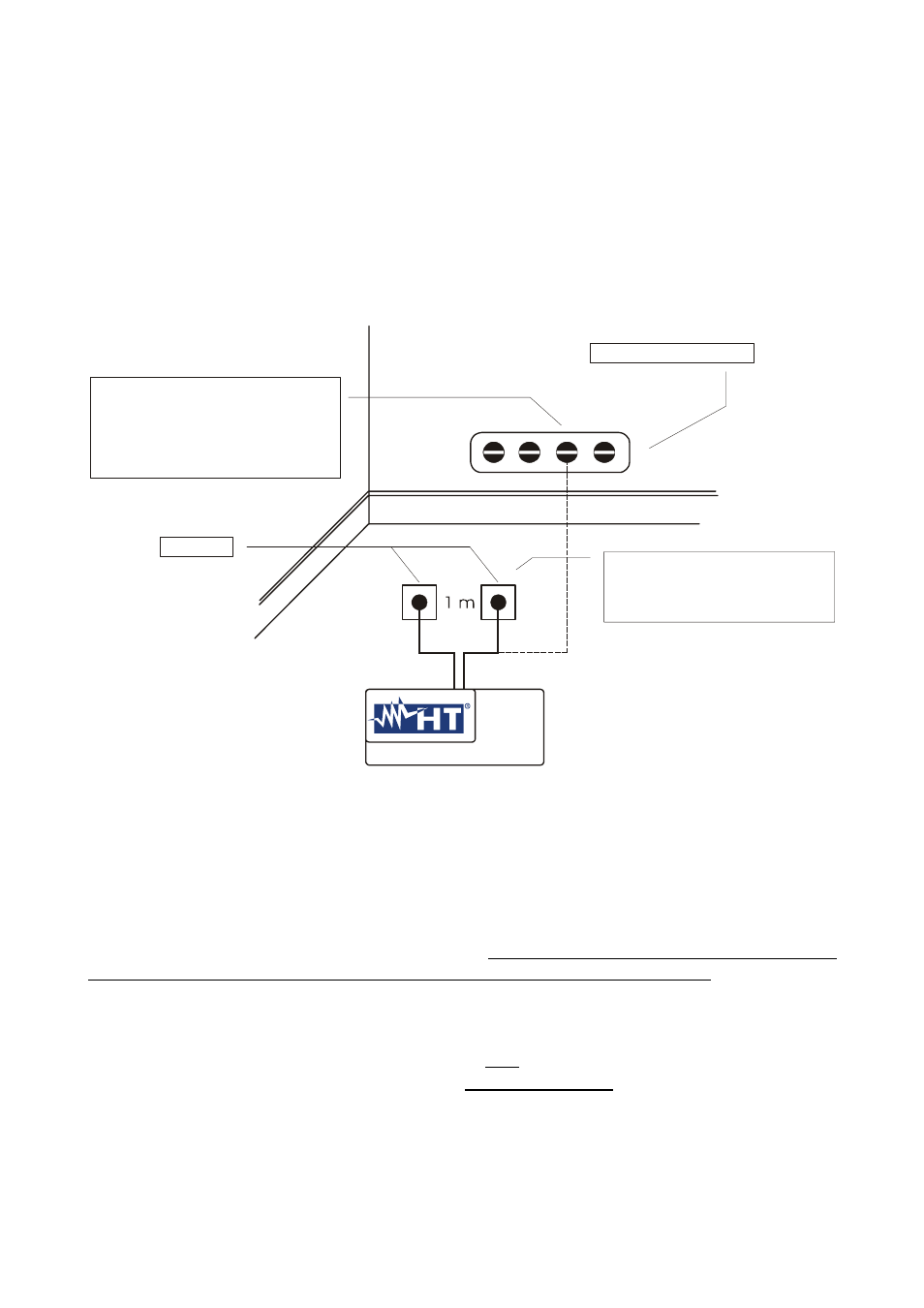Amprobe Multitest-1000 Continuity-Tester User Manual
Page 58

11.3. MEASUREMENT OF FLOOR INSULATION RESISTANCE IN MEDICAL ROOMS
PURPOSE OF THE TEST
Check that the floor is made of material whose insulation resistance complies with the
requirements of the standards CEI 64-4 (3.05.03).
INSTALLATION PARTS TO BE CHECKED
The test shall be performed between:
a)
Two electrodes whose distance to each other shall be one meter.
b)
One electrode on the floor and the equalizing potential node.
EQUALIZING POTENTIAL NODE
TEST LEADS
T
.
Connect one test lead of the instrument
to the equalising potential node and the
other to one of the electrodes placed
on the floor at a distance higher than
one meter away from earthed objects
Test a):
T
.
Connect the instrument test leads to
the electrodes placed on the floor at
a reciprocal distance of one meter
Test b):
Measurements of floor insulation resistance in medical rooms
The electrodes shall consist of a plate having a surface of 20 cm
2
, weight equal to approx.
1 Kg (2.2 lb), and a moisture absorbent paper (or thin cotton cloth) with the same surface
placed between the metal plate and the floor.
The insulation resistance is represented, both for the measurements indicated in "a" and
for the measurements indicated in "b", by the average of 5 or more tests performed in
different positions at a distance greater than 1 m away from earthed objects.
ALLOWABLE VALUES
The maximum values of the calculated resistance are the following:
-
1 M
Ω for measurements performed on a new floor.
- 100 M
Ω for the periodic tests performed after the first year from the floor construction
and for the periodic checks every 4 years.
All the values shall be registered on a protocol of the initial tests (64-4 5.1.02).
